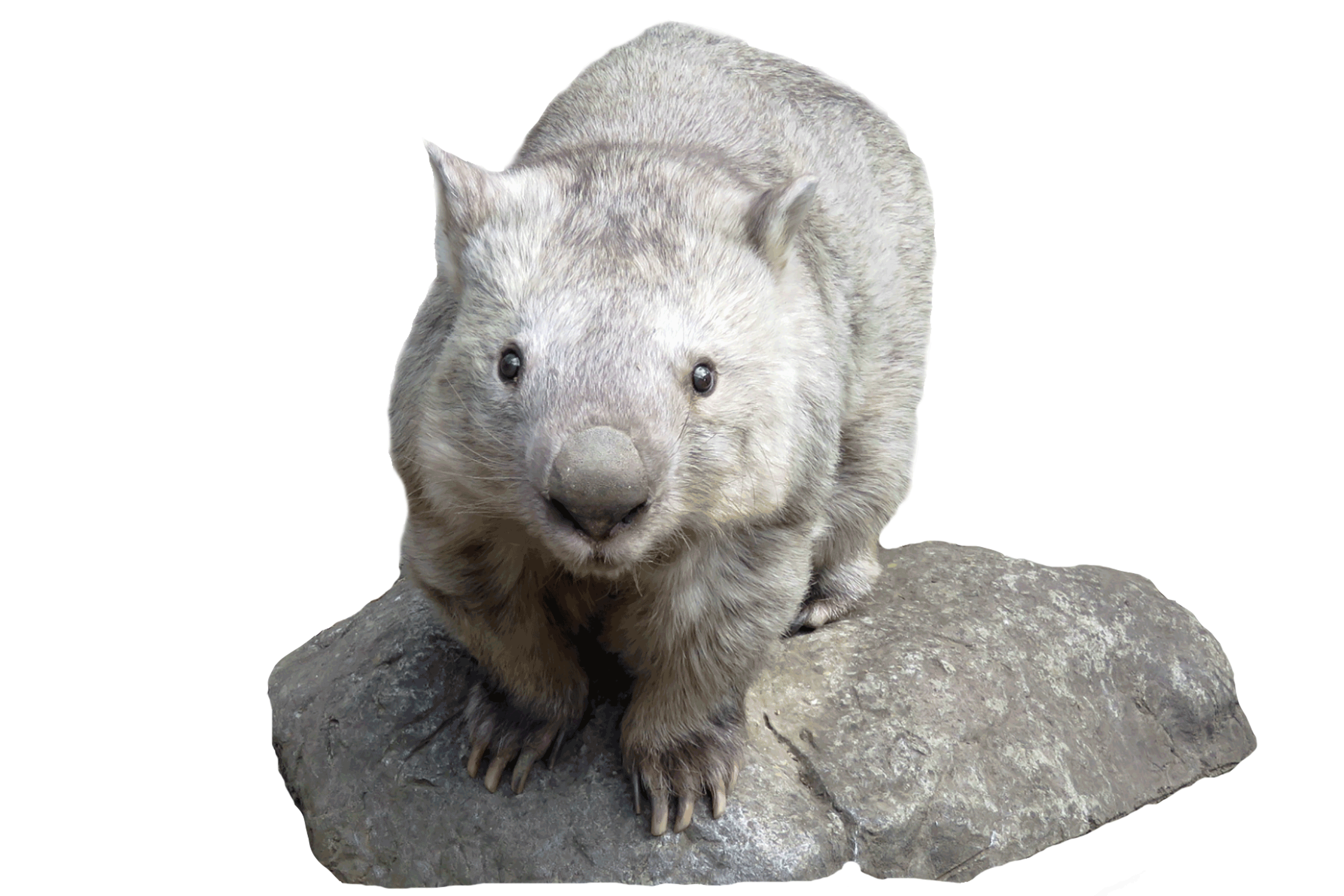Wombat
Wombat
Wombats are nocturnal, preferring to make their burrows in forest covered, mountainous areas or in the open areas of scrub and heath land. Their burrows can be up to 20 metres long and a Wombat may visit up to 14 different burrows in a month. Occasionally they will share their burrow but if a predator follows them, they will not hesitate to crush them against the walls or roof of their burrow with their rump.
Most Wombats will emerge from their burrows in the late afternoon to forage for food in the evening and throughout the night. Wombats are herbivorous, which means they only eat plant materials. Their favourite foods include native grasses, sedges and rushes as well as roots of shrubs and trees.
Wombats mature at two years of age and can have babies at any time of the year. Thirty days after mating they give birth to a jellybean-sized, hairless baby, which drags itself into the Wombat’s pouch with its front legs. Like the Koala, a Wombat’s pouch faces backwards which keeps the babies clear of dirt when digging. The baby will remain with mum for 21 months before becoming independent.
There are 3 species of wombat:
- The common wombat (Vombatus ursinus) (also known as the bare-nosed wombat), is the most widespread wombat species in NSW, and has a large, naked snout covered in grainy skin.
- The much rarer southern hairy-nosed wombat (Lasiorhinus latifrons) has larger ears than the common wombat, and its snout is coated with fine hairs. Until recently, the southern hairy-nosed wombat was thought to be extinct in NSW. They are currently listed as endangered.
- The northern hairy-nosed wombat (Lasiorhinus krefftii).
Despite its name, the common wombat is no longer common, and it has been officially a protected animal in New South Wales since 1970. The National Zoo & Aquarium was home to Winnie (pictured) the Common Wombat, until she peacefully passed in 2019 at the grand age of 32 as one of the longest lived wombats on record. We now have Winnie’s memorial garden where her habitat was located and built a brand new habitat in 2022 to house new arrival Poppy, a southern hairy-nosed rescue wombat!

| Conservation Status | Lower Risk |
|---|---|
| Distribution | South-East Australia and Tasmania |
| Weight | Up to 39 kg |
| Life Span | Up to 15 years in the wild and up to 30 years in captivity |